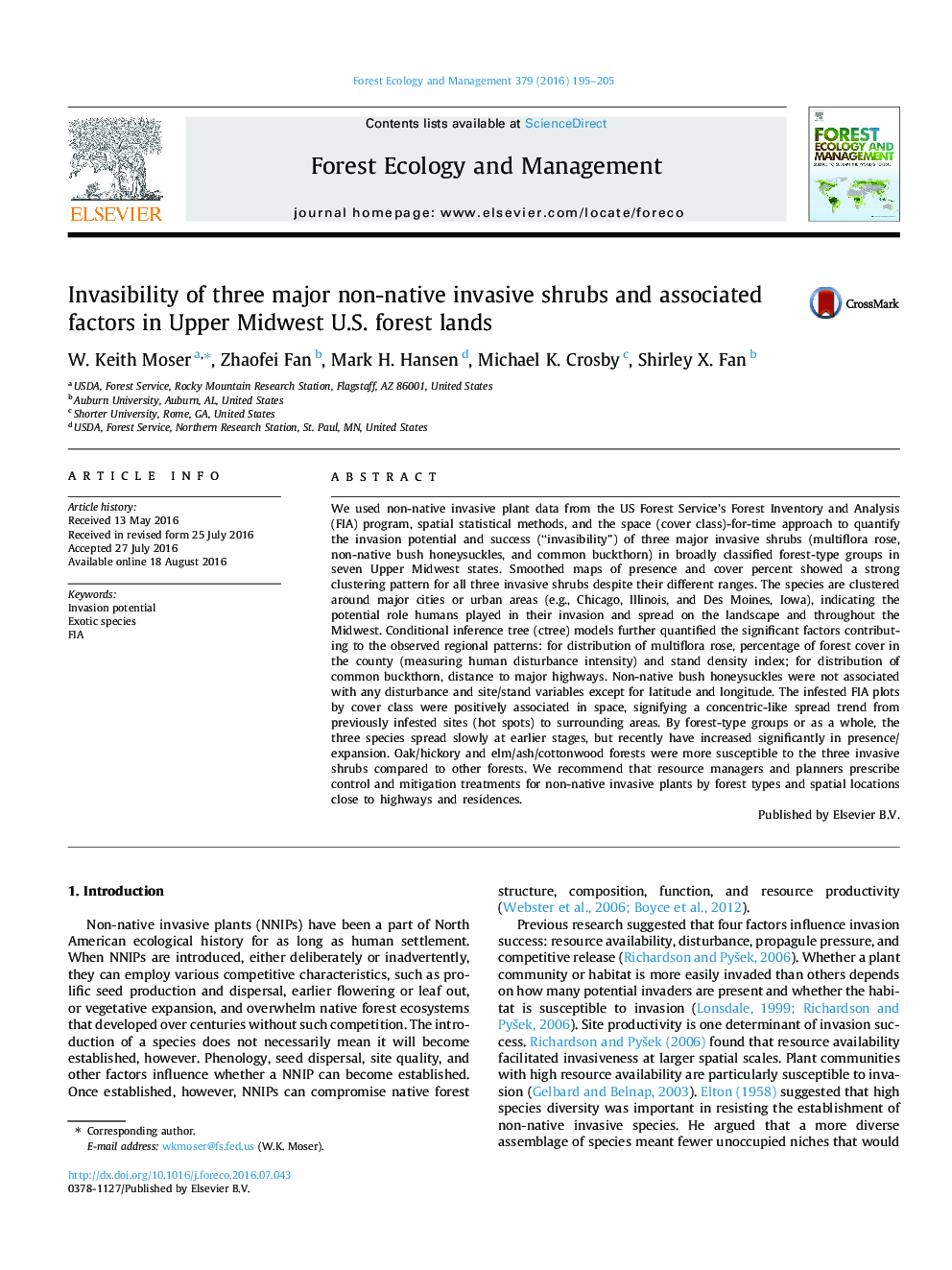| کد مقاله | کد نشریه | سال انتشار | مقاله انگلیسی | نسخه تمام متن |
|---|---|---|---|---|
| 6459642 | 1421379 | 2016 | 11 صفحه PDF | دانلود رایگان |
- We used FIA data to quantify invasibility of three major invasive shrubs in Upper Midwest forests.
- Patterns suggest a concentric-like spread from previous infested sites to surrounding areas.
- Oak/hickory and elm/ash/cottonwood forests were more susceptible compared to other forests.
We used non-native invasive plant data from the US Forest Service's Forest Inventory and Analysis (FIA) program, spatial statistical methods, and the space (cover class)-for-time approach to quantify the invasion potential and success (“invasibility”) of three major invasive shrubs (multiflora rose, non-native bush honeysuckles, and common buckthorn) in broadly classified forest-type groups in seven Upper Midwest states. Smoothed maps of presence and cover percent showed a strong clustering pattern for all three invasive shrubs despite their different ranges. The species are clustered around major cities or urban areas (e.g., Chicago, Illinois, and Des Moines, Iowa), indicating the potential role humans played in their invasion and spread on the landscape and throughout the Midwest. Conditional inference tree (ctree) models further quantified the significant factors contributing to the observed regional patterns: for distribution of multiflora rose, percentage of forest cover in the county (measuring human disturbance intensity) and stand density index; for distribution of common buckthorn, distance to major highways. Non-native bush honeysuckles were not associated with any disturbance and site/stand variables except for latitude and longitude. The infested FIA plots by cover class were positively associated in space, signifying a concentric-like spread trend from previously infested sites (hot spots) to surrounding areas. By forest-type groups or as a whole, the three species spread slowly at earlier stages, but recently have increased significantly in presence/expansion. Oak/hickory and elm/ash/cottonwood forests were more susceptible to the three invasive shrubs compared to other forests. We recommend that resource managers and planners prescribe control and mitigation treatments for non-native invasive plants by forest types and spatial locations close to highways and residences.
Journal: Forest Ecology and Management - Volume 379, 1 November 2016, Pages 195-205
